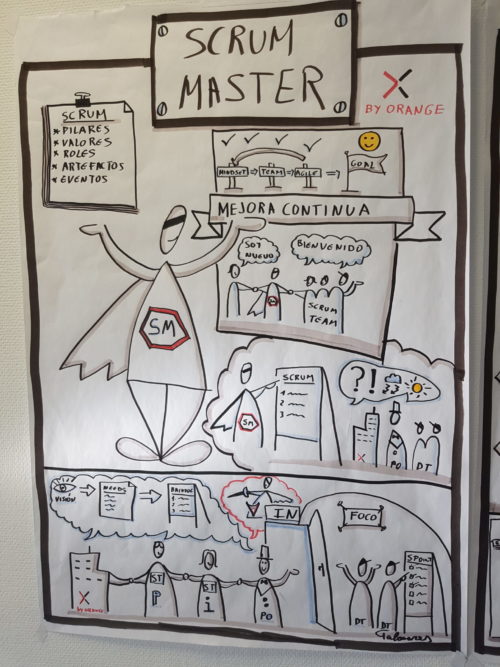
Scrum Master Challenges
Scum Master Challenges, what are they? Scrum Master, there are many articles that talk about the theory, and what you should do, that’s why I want to talk more about the problems that you are going to encounter, and how I faced them, when I was Scrum Master. With time I realized that some things I did, I did them really bad, but the important thing is learning from mistakes….
I hope that my experience can help you, to help others, remember that you are not the important one, your teams are.
Scrum Master challenges. The certificate is only good for you to pass the human resources interview, nothing else.

In the first company where I worked, I spent 15 years, more than half working with Scrum, Kanban, XP, TDD, etc. Unfortunately this company had financial problems and many of us had to leave.
When I started looking for a job, in all the human resources interviews, they asked me for a certificate in Scrum, and I didn’t pass them. I was super frustrated that all my experience was worthless, and I refused to bow down to this demand.
Over time I understood that if I wanted to work on what I was passionate about, I would have to enter in the game of the Spanish titles, and I had to get some of them.
The certifications allowed me to return to work in agile transformations, but my experience and background made it possible for me to do it optimally.
That’s why, my friend, to work in this, certification alone is not worth it, so be careful when you say you have experience and it’s a lie.
Scrum Master Challenges. Don’t be silly, the technical excellence of your team is part of Agile (XP, TDD, CI, BDD).

If we talk about technical excellence and specifically about TDD, I have to thank people like Kent Beck and Carlos Blé, the great contribution they made to the development community. I recommend that you read his books “Test-Driven Development by example”, y “Agile Design with TDD”.
Scrum Master, you are working with development teams, and you do not know, nor do you want to know the «technical words» they use, so move your ass and start studying, and I am not saying that you become an expert.
How are you going to help anyone, if you don’t understand them, or tell me what you will do when your team use words like: “Kubernetes, Kafka, Mongo, OpenShift, Sisyphus, Copado, Pruning, TDD, Junit, Jenkins, etc”. I have seen more than one with that expression on their face of «What the hell are these people saying?«.
My advice, study and understand this technical vocabulary, so that little by little you can understand your team, and ultimately be able to help them better. It is important that all of you speak the same language, and this effort will make you gain confidence within the team.

Remember that the search for technical excellence is one of your challenges, so you have to make sure that the team improves in this aspect (design patterns, code review, unit tests, continuous integration, or continuous deployment). It will be very hard for you to tell the team that whoever does not want to enter this game, feeling very sorry, will not have a place in the team.
My red card for those Scrum Masters who, coming from the world of development, did not want to recycle their technical vocabulary, since as I am now a Scrum Master I do not need it, big mistake my friend.
Scrum Master challenges, you have to insist la lot on with Value and Velocity.
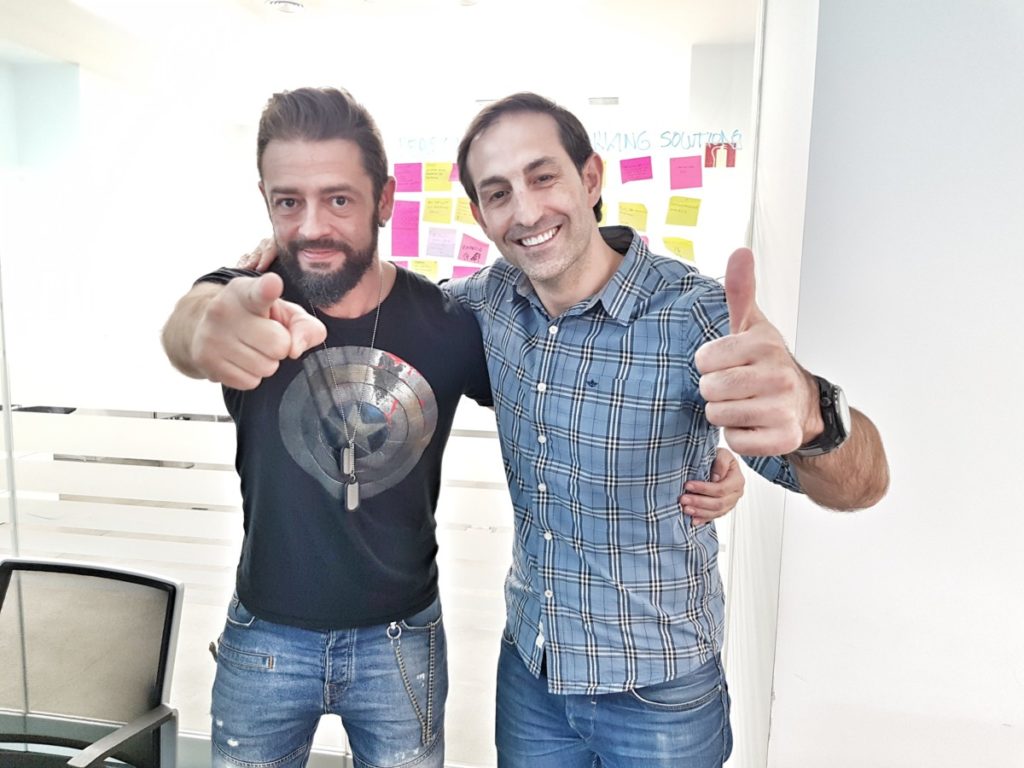
The message that Javier Garzás gave us in the Pragmatic Agile Coaching course was simple (not easy to apply) and it was that we had to watch over Value (Efficacy) and Velocity (Efficiency), and stop doing stupid things.
Scrum Master, from my point of view you can give it as many turns as you want, but the message for the team is clear, continuous improvement, velocity and predictability, and for the company it is strategy, value generation for the client, and organizational culture.
You can deceive your company / team by saying that the most important thing is to add value to the customer, but if you take 6 months to add value to develop it, you’re dead. Doing many things that do not generate value is not worth it either. The ideal, would be to generate many things and with a lot of value, and this should be our vision. I’m not saying it’s easy to get, my friend …

There are some agile gurus who say that the concept of «productivity» is a «dark» concept, related to command and control or Taylorism, therefore measuring the velocity of teams as well. I can agree, if what you want is to compare the productivity of one team with another, but if what you want is for your team to be better and better, and to do more and better things, the subject changes (without over-effort).
What is a mistake is thinking that a newly formed team is going to develop many things, it is going to have a constant speed and it is going to be predictable (don’t ask for pears from the elm tree).
Scrum Master Challenges. The great secret of early delivery and estimates.

How many companies have disappeared for not having adapted to the new times. Call me crazy, but what rewards now is «Time to Market«, that is, going to the market in the shortest time possible and testing hypotheses.
Tools such as Scrum, DevOps, Cloud, Micro Services, etc., should help us go up to production sooner, with the best possible quality, and with happier people at work.
From my humble opinion, if all the cool tools and fashion frameworks slow us down in production, I’m sorry but it’s not worth it. I am from Customer first – Delivery first.
Scrum Master, who generally helps us in delivery first:
- Have small user stories.
- Involve the user in the development cycle.
- Automate tests to ensure software quality.
- Eliminate waste in the development flow.
- Automate deployment across environments.
- Maintain stable teams over time.
I’m not the only one who thinks of delivery first. Carlos Buenosvinos tells us that sometimes we freak out with cutting-edge technologies, and neglect delivery. Scrum Master, for you this video should be a must.
Scrum Master challenges, you are not a reservation room.
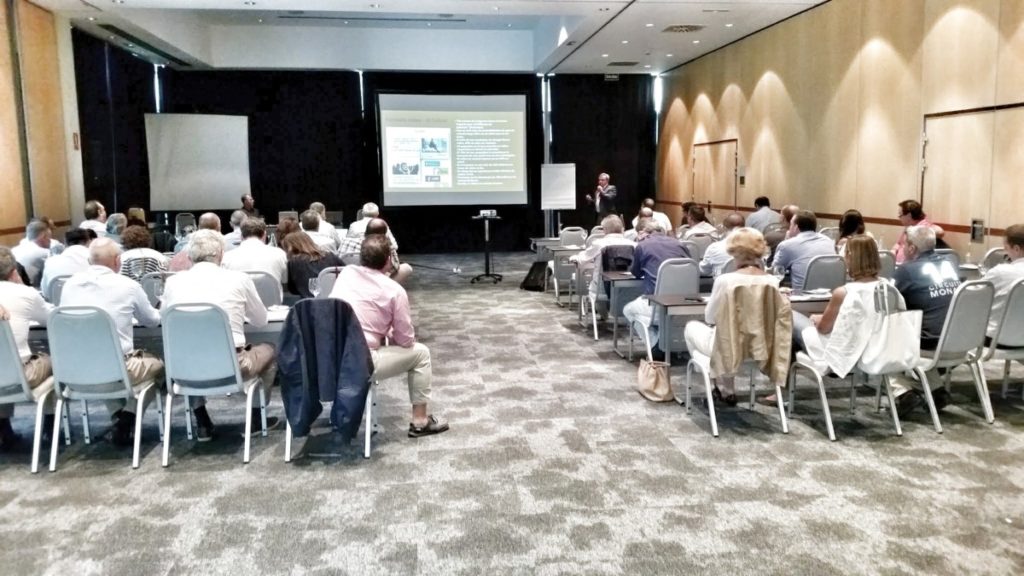
Many Scrum Masters work like those porters who appeared in the Tarzan movies, who obeyed orders without question, yes bwana, yes bwana (master in Swahili)
We usually use the Scrum Masters as people who are dedicated to reserving meeting rooms, chasing people who do not go to the dynamics (shepherding), documenting reviews, retrospectives and uploading them to the confluence.
When someone new joins the team, they are in charge of asking for access to the 20 tools, jira, permissions, software repositories, welcome pack, onboarding, etc, etc. In short, they usually do the tasks that nobody wants to do, and your Scrum Master says, «Scrum is difficult to apply to reality».
Scrum Master, apply the word “courage” that you preach to your teams, and explain to everyone how important your real work is. If they ignore you, change jobs, don’t waste time.
Scrum Master challenges, lead by example friend.

It is not the first time that it happens to me that the day before the review, the development team decides to stay a little longer than the schedule, because they want to leave it as good as possible, and the Scrum Master leaves on time saying that he cannot give a helping hand.
Personally, I like that a Scrum Master is also part of the development team, and even more, that the role of Scrum Master rotates within it. In this way, we are all involved in the same way in achieving team objectives.
Scrum Master you may be doing a great job, but if you are not in the difficult moments of your team, a significant trust gap will open. What would be great is if we all decided to stay a little longer (voluntarily), there would be the Product Owner, Scrum Master and the Development Team. Perhaps in this way the Product Owner thinks twice before adding something that was not included in the initial scope in the next sprint.
If you are a Scrum Master, and you are not part of the development team, maybe you have to take care of the pizzas for dinner, help them with the tests, or just being there, it will be a great opportunity for the team to continue growing, and trust you.
Roll up your sleeves and never say, I don’t touch shit.
Scrum Master Challenges, We admit the change, but it’s not free my friend.

In the agile manifest you can read something like:
“ We accept that the requirements change, even in late stages of development”
Some clients with the only thing they are left with, is that in an agile framework the most important thing is client satisfaction, and that changes in requirements are accepted at any time, but I don’t know why, but they think that the cost and the delivery date will be the same. Scrum Master in this sense be careful because he can try to deceive you.
Scrum Master, they ask your team to make 1,000 jars in two months. The first month they deliver 400, and when the customer sees them he says that he was confused and that there were 1,000 glasses of wine, gosh. The worst of all, is that he wants them on the same date and with the same cost (and what happens now…).
Scrum Master, if we force the team to make 1,000 jars in just one month so as not to lose the business, what you will lose is all the trust with your team, and all the work you have done will go to shit (as Fernando Fernán said Gomez).

Good Scrum Masters and good Product Owners see through difficult times (like everything in life). Saying «YES» is very easy, but what really differentiates crack from the mediocre is knowing how to say «NO«, when appropriate, negotiate my friend …
Scrum Master challenges, manage the change in your organization.

The harsh reality, is that for change to occur in an organization, top managers, directors, and managers have to positively want the change to occur. If not, you’re pretty screwed mate.
As a tool to work on this point, I really liked the book “Leading Change” by John Kotter, considered by some to be the basic body of knowledge in the field of change, innovation and entrepreneurship.
Scrum Master, you are going to see that Kotter’s 8 steps are very related to things that you can see in the Agile Manifesto (I think):
- Create sense of urgency.
- Form a coalition.
- Create vision for change.
- Communicate the vision.
- Remove obstacles.
- Ensure short-term wins.
- Build on change.
- Anchor the change to the company culture.
I really like in my training, explaining the 8 steps of Kotter with the movie «Moneyball«. He gave you the example:
Scrum Master challenges. Promotes Training and Innovation.

As you know, a person has three main motivations to stay in a company, economic motivation (money), emotional motivation (personal life), and intrinsic motivation (doing something different and wonderful at work).
Reading the book “Coaching” by John Withmore indicated the following:
Millennials demand a change in leadership, which leaders don’t know how to deliver. The change in expectations of the youngest employees, have given the first touches of attention.
In job interviews they want to know what training and development opportunities they can expect in the company, and what kind of leadership they will find.
They do not seek, nor do they want, a job for life, and they will change jobs if their needs are not met.
As I love topics related with Coaching and I am certified, «in case you are interested», I leave you some tips on how you should carry out a good Individual Coaching session.

Not long ago, if an employee worked very well and you wanted him to stay, you raised his salary and that was enough (economic motivation). In these times, emotional motivation and intrinsic motivation are often above economic motivation.
Scrum Master, a trained, happy, and motivated employee, is much more productive than simply one who is paid well. I have worked in companies where, by not paying wages, we are going to say “decent”, we have had to work much more on emotional or intrinsic motivation, promoting, for example, teleworking, training, innovation, etc.
Scrum Master, I would like to leave you this video by David Bonilla that talks about the types of motivation that exist, and how an entrepreneur can be competitive in salaries.
What types of personalities do you have on your team?

You have several alpha males in your team, who fight to be the owners and lords of the herd. You have many people in your team who only make plans but never take the risk of making a decision. Scrum Master you will have to see what the individual behavior of each person is and how it affects the team.
What makes a team rich is diversity, and as time goes by, they get to know each other, respect each other and gain trust.
In the following link you can see how to study the personality of each of the people on your team, and see if these personalities compensate or destabilize the group.
Work on the dysfunctions of your team, so that it is of high performance.
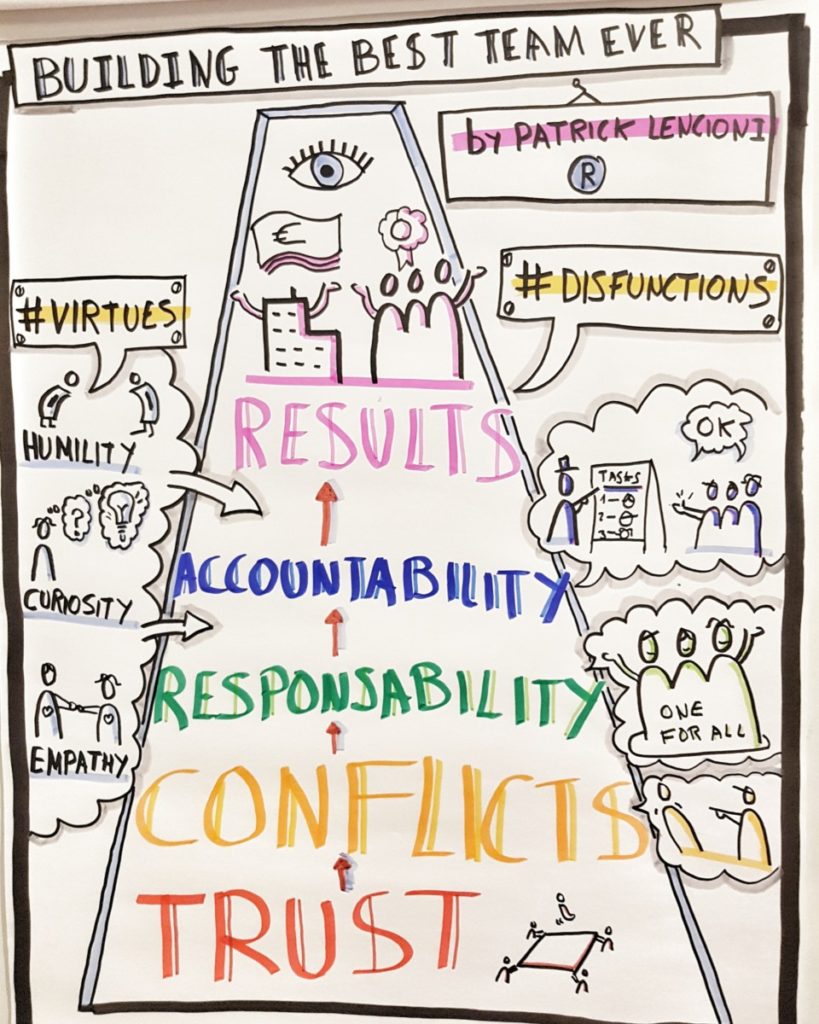
Scrum Master, the supreme test of a great team are the results. The greatest dysfunction of a team is the tendency of its members to be preoccupied with something other than the collective goals of the group.
One of the tools that I have used to work on the dysfunctions of a team, I could find in the book «The Five Dysfunctions of a Team» by Patrick Lencioni. In this book he indicates that in order to reach the results, the following dysfunctions had to be resolved first:
- Lack of confidence
- Fear of conflict
- Lack of compromise
- Avoid responsibilities
- Lack of attention to results
The way I see it, and I’m sure I’m wrong, is that the Scrum Master has to adopt the role of Leader, to work on the dysfunctions of his team.
Leading a group of people who work together, to a high-performance team, is super complicated, and sometimes there are external factors that you can never control. If you have passion for your work, and you are patient, my advice is as follows:
“No matter how many good tools you have, if you don’t put human relations first, you won’t achieve anything really great”.
To talk about leadership, I leave you with a video of one of the best basketball coaches, Ettore Messina. It’s a bit long video but it’s worth it.
Be careful with Funny Retrospectives. What do you want to get?.

Scrum Master, the dynamics to relax a hostile environment (ice breaker), aim to achieve something, under a specific context. If you’re looking for the latest funny retrospective, because you’ve been told to change the dynamic for no other reason, you’re wrong.
It is true that you should know different types of retrospectives, and depending on the mood of the team, the conflicts that occurred during the sprint, or the desired objective, you know which one can fit better.
Another important thing, some dark side people or team members will tell you that half an hour for a retrospective is plenty of time. Your job is to scratch and scratch and scratch until transparency emerges so that you can inspect and take action plans.
Constructive conflicts are good for the process, remember Lencioni’s second law (conflict management).
Please, please, please avoid cosmetic agile and paint and color, which is doing us so much harm.
In this article I wrote more things that you should consider in a retrospective.
Scrum Master challenges, don’t be discouraged and keep trying.

Once when I was working as a Scrum Master I entered a company and this is the first thing they told me «here each Scrum Master has three teams», we work with SAFE, you have to manage the impediments, call the meetings, prepare the retrospectives, train the teams, and Product Owner and the company. In addition, we have a Scrum Master community, where we look for proposals for improvement, with actions that must be fulfilled.
In the above context, you basically see the people on your team in the dynamics and little else. You have three 15-minute dailies in a row, where all you do is look at the clock, instead of paying attention to transparency, inspection and adaptation. Fifteen minutes later you say, well, go ahead…

You have to do wonders so that the refinement meetings, reviews and retrospectives do not coincide, but of course as you do SAFE, that advises you to synchronize the sprint finishes, you have to compress the reviews, retros and plans in 3 hours, to see if in a day you can manage at least two of your three teams.
This without counting the risk management meetings, dependencies, release management, inception, etc, etc. I’m sorry I quit
Manager and business managers «seriously you want this«, no gentlemen, that is not a Scrum Master, nor will it ever be….
Thank you very much for reading the post to the end, because it got a little out of hand (sorry). I hope I have been able to help you understand what a Scrum Master is and is not.

Congratulations to those ds who risk their jobs to do things the way they should be. I leave it there….



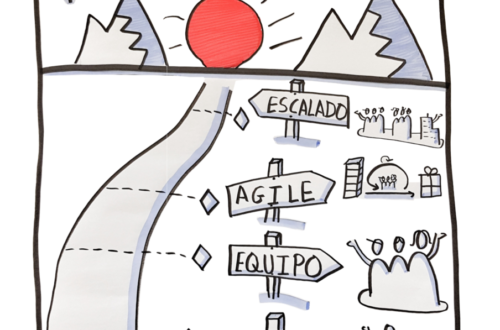


Un comentario
Pingback: